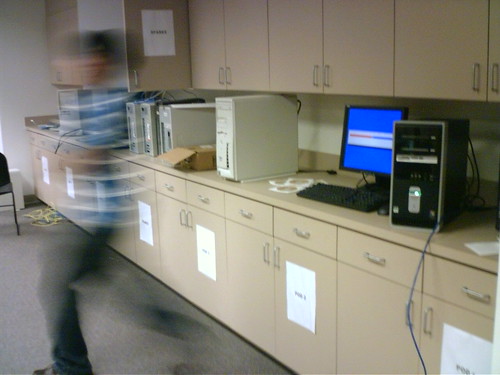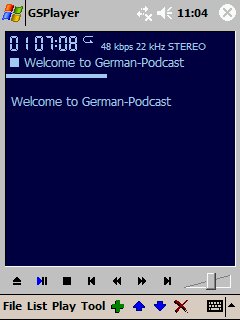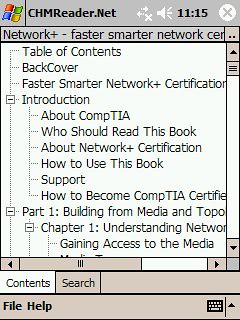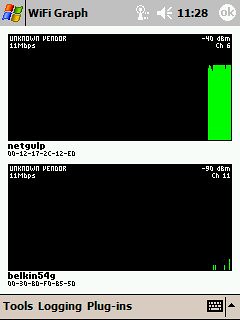My brother, Mark, sent me a link to the update:
So, go there:
http://shifthappens.wikispaces.com/
http://thefischbowl.blogspot.com/
Thanks for coming to my blog. I'm Danny Thompson, a Computer Information Technology student and a writer. I live in Winter Park, Florida with my wonderful girlfriend, Nancy Deutsch. We have three dogs, lots of hot sunshine, and a few hurricanes.
Tuesday, February 26, 2008
Monday, February 25, 2008
Thursday, February 21, 2008
Edubuntu Classroom Project
A few weeks ago, I decided to take on a project. A person on FreeCycle.org Orlando group asked for computers for a new school. Interventions Unlimited works with children with learning or behavioral difficulties. Right now, most of their kids are autistic. I asked about the possibility of helping set up an Edubuntu LTSP (Linux Terminal Service Project) system for them. After listening to The Linux Link Tech Show podcast episode 217, I wanted to do an LTSP. This would be the perfect opportunity for me to learn how to set up that system. I'm taking Network+ right now, and asked Professor Brunick if my group could use this for their project. He agreed, adding it to a larger overall project for the class. I set up a single Edubuntu workstation for the school to try out, and see if they liked it. They liked it, and accepted the offer. Hey, who's not going to accept free.
I had most of the equipment we needed in Free Geek Central Florida storage, except an appropriate computer to be the LTSP server. As the Law of Reciprocity works, one came in that weekend.
A Linux Terminal Service setup requires only one computer to be the 'big boy'. The other computers can be older. For a general terminal type setup, only a 200 MHz with 32 mb ram is needed. For a good Edubuntu implementation, 400 MHz, 128 mb ram, and 2 mb video is recommended. The teachers server is the only one that needs to be a powerful computer. It doesn't need to be as powerful as todays computers, but it would help. The teachers computer dishes out everything to the 'thin client' computers. The client computers don't have a hard drive; they boot from the Edubuntu server. All the client needs is a processor, monitor, keyboard, mouse, and a network card enable to boot the computer. Everything is run from the server/teachers computer, but shows up on the client computers. This type of setup enables many business and organizations to convert to Ubuntu/Edubuntu with very little setup costs. Most business could convert and use their current equipment for many more years. Sorry Windows. Okay, I'm not really sorry.
There a several ways to setup this system. The picture below is the one we choose for this set up:
 Because this is a school, with kids, the system has to be able to filter internet content. Dansguardian is the primary content filter Linux uses. The Internet has to come through the server so it can filter bad things. You know. Things like stories about The Skull and Bones at Yale.
Because this is a school, with kids, the system has to be able to filter internet content. Dansguardian is the primary content filter Linux uses. The Internet has to come through the server so it can filter bad things. You know. Things like stories about The Skull and Bones at Yale.So, I brought the stuff to school:
 Above, we're installing the Edubuntu system. The server is a Compaq 2 GHz Sempron, 512 mb ram, 164 GB hard drive. It would help to eventually boost the memory to 2 GB.
Above, we're installing the Edubuntu system. The server is a Compaq 2 GHz Sempron, 512 mb ram, 164 GB hard drive. It would help to eventually boost the memory to 2 GB. Here, we're booting one of the students laptop from the Edubuntu server. The laptop has only Windows on it. Being a Compaq, you can press F12 to boot from the network.
Here, we're booting one of the students laptop from the Edubuntu server. The laptop has only Windows on it. Being a Compaq, you can press F12 to boot from the network.Once you have the system set up, any student can log in to their own log in name, and have their information at any of the terminals. Everything stays on the server hard drive. In the future, I want to figure out how the kids can log in to their system from home.
There are a few things that would make this system better:
- A really good desktop/server. One that can have lots of ram
- A NAS (Network Attached Storage) - something that can hold lots of files. Maybe a Drobo, with a Drobo Share.
- A second server might help too.
I've added a wireless PCI card to the server. It might be easier to access the internet wirelessly, or is might be possible to get some of the terminals to boot from a wireless card. That would be a really big benefit to some schools and business.
If you'd like detailed information on the Edubuntu LTSP thing, checkout the online book:
https://wiki.edubuntu.org/HowToCookEdubuntu/Chapters
If you'd like detailed information on the Edubuntu LTSP thing, checkout the online book:
https://wiki.edubuntu.org/HowToCookEdubuntu/Chapters
So, if any of my readers have had experience building and installing an Edubuntu LTSP system, please email me ( bodycoach2@hotmail.com ), or leave a comment.
Tuesday, February 12, 2008
I'm Web 2.0ing myself everywhere now. I've added Twitter to my web ammunition:
http://twitter.com/bodycoach2
http://twitter.com/bodycoach2
It's kind of difficult to explain Twitter. If you use Facebook regularly, Twitter is like the Status Update. I can post a brief, quick update about myself, Free Geek, or anything I want to from almost anywhere. I figured out how to Twitter from my Pidgin instant messenger, and from my phone.
My Twitter feed on the blog will remain at the top right of the page -next to the latest blog entry. So, visit my blog frequently to see what new Linux adventure I'm having, what the dogs are doing, and the age old twitter question, "What am I doing now?"
Thursday, February 07, 2008
Wednesday, February 06, 2008
Using my Pocket PC iPAQ with Ubuntu
Notice I did not write 'syncing' Pocket PC with Ubuntu. I don't even bother syncing my iPAQ with Windows anymore, so I have no reason to sync anything. I don't use Outlook or Evolution. If there was a way to sync Pocket PC contacts and schedule with Yahoo Calendar and email, I'd probably use it, but I use that on my cell phone anyway.
 I have to admit, I really like My Toy, as I call it. I've had this one a long time. I got a RhinoSkin case for it:
I have to admit, I really like My Toy, as I call it. I've had this one a long time. I got a RhinoSkin case for it: The case has really helped it take a beating. I've dropped it a few times, and the worst that happens is the SD card will pop out.
The case has really helped it take a beating. I've dropped it a few times, and the worst that happens is the SD card will pop out.I don't use My Toy like most people use their PDA's. Mine is more of a tool. Here's what I use My Toy for:
Listening to audio books - one's I've either ripped myself, borrowed from someone else, or the one's I've downloaded from Audible.com. I don't really listen to music. I use GSPlayer from GreenSoftware. It plays MP3's, OGG, streaming audio and other files types I don't use. It has many more features than the standard Windows Media Player for Pocket PC. I highly recommend GSPLayer. I also use the Audible Player from Audible.com to play those files. Listening to audiofiles doesn't drain the battery as much as reading ebooks. The backlight goes off after a predetermined amount of time -I set mine for 2 minutes. Sometime, I'll do an audio-only battery time test.
Reading eBooks -
My primary reader is Microsoft Reader, mostly because I have a collection of 15,000 ebooks I acquired before I started using Linux. Many of them came from Baen Free Library and Blackmask Online (now called 'Munseys'). Even though it's proprietary, I still recommend MS Reader.

I also use Mobipocket Reader. Mobipocket is owned by Amazon. I've started a small collection from Manybooks.net, and they don't support MS Reader, but do support Mobipocket. Mobipocket is also an excellent reader. The best think I like about the Mobipocket reader is the ability to make it full-screen mode - something I've not been able to do with MS Reader.

Adobe Reader for Pocket PC - isn't the best option. The 'respin' of the text to Pocket PC size rarely works. When it does, even then the pages turn slow. I really wish this format was better supported -if that's possible- because so many things are saved and published in .pdf (Portable Document Format).CHMReader.net - many books, including .pdf files, are converted to html help files. If you ever read a help file on Windows, you're looking at a chm formatted document. I've learned that I can find most of my textbooks online in chm format.

The main advantage to reading on a Pocket PC -or any digital device, for that matter, is the library. At any given time, I carry more than 500 eBooks in my pocket. Standing in line at the grocery store? Read a page or two.
Being able to change the font size or style is also helpful. As I grow older, my eyes aren't as good as they used to be. But, with an eBook, I can instantly increase the size of the print. I've discovered this helps with comprehension too.
Another advantage of reading on the Pocket PC - Backlight. When your significant other turns the light off while your reading, you're backlight is still on. To cut glare, I turn the screen brightness down to almost-the-last setting. Saves on battery life too, which brings me to my last point about eBooks.
The primary disadvantage is battery life. Reading an ebook requires the backlight to be on. In normal settings -for me about midway- reading an ebook will drain the battery faster than listening to one. Not nearly as much as using WiFi on the iPAQ though. Usually, I can get about 12-15 hours of reading before I have to refuel it.
Taking Pictures - I use the onboard camera to take most of the pictures on My Flickr page. Since this is an older iPAQ model, the camera isn't as good as I'd like, and the video capture quality is barely workable. Nancy's Nokia phone take better pics indoors and in dimly lit rooms. I'd love a camera as good as the ones on an iPhone.
Surfing the net - Since My Toy has WiFi, I use it to get online.
Site Surveying - The program WiFiFoFum works much like Netstumbler, and works better than ministumbler, in my opinion. I can use this program for doing wireless site surveys. Okay, I use it for Wardriving and Warwalking too. I use the program WiFi Graph to do get signal level analysis. These tools really help when I'm putting a FreekBox in for a Free Geek candidate. I can quickly determine if there's a community or municipal wireless service available nearby. Of course, I can't stop the FreekBox recipient from borrowing their neighbors wireless signal, if they want. I do recommend that they ask, and offer to share in costs.

Since I use Yahoo calendar for my scheduling, email and contacts, I don't need to sync that with my Pocket PC. I've set Yahoo to text me for important appointments. I would eventually like to have my phone and pda in one complete package, but what I have is working just fine for now.
Using the iPAQ with Ubuntu is much easier to do than I thought it would be. I purchased a $12 multi-reader (compact flash, SD, xD, etc). From the day I started using the iPAQ, I've used the SD card to keep most of my information. I have most of the programs I use to automatically save to the SD card, or I save the file there myself if that option isn't available. I save newly installed programs to the onboard flash storage, and back the entire thing up to a second SD card. I've completely boinked the system a few times, and had to do a complete restore. Luckily, it takes less than five minutes.
Since I'm a writer, I use the Pocket PC to do much of my writing. Instead of saving in Pocket Word format or even .doc format, I simply save it as a .txt file. I usually get prompted with "You will lose any formatting," as though Pocket Word can do any real formatting. I can bold and italic things later. Once the file is saved on my SD, and can open it in OpenOffice.org, or in Gedit. If I ever forget to save in .txt format, OpenOffice.org actually opens a .pwd file. Older OpenOffice.org versions use to have it as a save option, but I guess they decided to drop that.
While I do miss having the Pocket PC Documents folder synchronize with the Mobile Documents folder in Windows, using the SD card actually works just as well. By keeping my files there, I can use it just like most people use a USB Thumb Drive. The advantage I have is that files transfer way faster using the SD card than through the Pocket PC link on Windows. It takes about 2-5 minutes to load a few podcast on the Pocket PC through the Windows link, but with the SD card it takes 2-5 seconds. Same with moving pictures.
I don't know if the current crop of iPAQ's and other Pocket PC devices have an SD or miniSD card, but I understand most of them have something like that. Even the Smartphones.
When Pocket PC's first came out, you had to have them connected to Windows to install applications. Now, many app writers create a package you can install directly on the Pocket PC. Almost all the apps above have a direct install package available.
When Pocket PC's first came out, you had to have them connected to Windows to install applications. Now, many app writers create a package you can install directly on the Pocket PC. Almost all the apps above have a direct install package available.
Someday, when I have the guts, I'm going to try the Opie system for the iPAQ. I have a friend who's ported it for the rx3700 series, but not everything is working. It would be nice to be able to use Linux on it. I'll really have to do some thinking on it. I'd miss the eBook experience.
For now, I'll keep hacking away on Ubuntu and My Toy.
Friday, February 01, 2008
Am I a Socialist?
I'm known for a few quotes. "I'm not lazy! I'm a Personal Energy Conservationist" is a favorite of my family and friends. But, another of my quotes, "I'm all for socialism, as long as the government isn't involved."
I'm involved with an organization that seeks to reuse, rebuild, and recycle something. If it can be rebuilt or reused, it's virtually free. Basically, we're promoting the sharing of a resource.
FreeCycle.org is an organization that seeks to keep items in use by sharing what you no longer need or want with someone who does need or want it. FreeCycle is how Free Geek acquires many of it's computers and computer parts. When Nancy and I put a stainless steel cooktop on FreeCycle, it took a few day, but someone came and got it. While we no longer wanted it, someone else was either able to use it, or recycle it.
We live in a world with a three tiered economy:
- First Tier is brand new items that are purchased.
- Second Tier is used items that are resold.
- Third Tier is used items that are given away for reuse.
Ebay and Craigslist are good examples of Second Tier economy. FreeCycle and Freegan are examples of Third Tier ecomony.
More people are turning away from over-consumption, wasteful living, and avoiding earnings through ignoring abusive practices. Some people are discerning about what they invest in, even when it means a lower return. It's simple not worth it to those people to earn money if it means the company they invest in provides a good return partially due to abusive business practices.
Some people even seek to practice living making as little income as possible. Another one of my quotes; "I've found the best tax shelter there is - Make less money." In retrospect, I wasn't too far off-track. If you can live well with little money, why bother with the pursuit of a higher income? Once you realize you don't need or want more stuff, you can easily lower your tax burden.
Making less money doesn't mean you promote or are even able to live a lazy-ass lifestyle. Quite the contrary. Living with less money requires just as much work as making more money. The difference is that the work you do is completely for yourself, your family, or your community. The work and labor you do to live with less money increases your independence from a job, a boss, even the utility companies and the government. Your sweat equity goes toward your independence, not someone elses pocket.
Living such a lifestyle comes with a responsibility to share. To make such a lifestyle work, you have to realize you can't do it completely alone. Even animals know they survive best in packs, herds, schools or gaggles. It requires the help and sharing of resource from others who are working toward more personal independence. It requires sharing your efforts and resources with them. It really is true; the more you give, the more you get.
Non-profit organizations, and even underground sharing organizations are the largest growing part of the US economy. No government organization needed. It's becoming more evident that The path to financial independence doesn't mean increasing your income. It means needing less income.
Subscribe to:
Posts (Atom)
